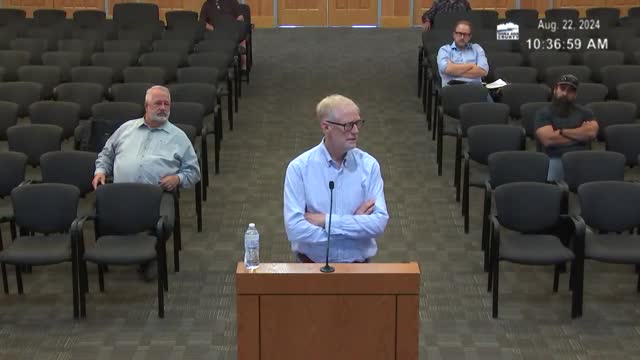Water Crisis Looms as Local Leaders Push for Solutions
August 23, 2024 | Doña Ana County, New Mexico
This article was created by AI summarizing key points discussed. AI makes mistakes, so for full details and context, please refer to the video of the full meeting. Please report any errors so we can fix them. Report an error »

In a recent government meeting, officials discussed critical water management strategies for the region, emphasizing the need for local involvement in planning processes. The meeting highlighted past efforts, including a comprehensive water resource assessment conducted by the water research institute in 2004 and a state planning round in 2017. Participants stressed the importance of engaging local water users—such as counties, cities, and agricultural groups—in future planning to ensure sustainable water use.
A significant focus was placed on the Laonian Watershed District, with discussions surrounding a two-year project aimed at improving water management and providing local residents with access to vital information by May 2024. The project, which includes collaboration with the Elephant Butte Irrigation District, aims to enhance riparian habitats and aquifer recharge efforts.
Concerns were raised about the impact of large agricultural operations, particularly dairies, on water consumption. Participants expressed skepticism about the region's long-term water availability, citing climate change and insufficient snowpack for aquifer recharge. The discussion included the need for alternative crops that require less water, with suggestions for incentivizing farmers to adopt these practices.
The meeting also touched on the potential of desalination as a solution for water scarcity. A pilot project in Alamogordo has shown promise in treating lower-quality water, although costs remain a concern. Officials noted ongoing efforts to explore desalination options in Dona Ana County, including a proposed facility that could significantly contribute to local water supplies.
Overall, the meeting underscored the urgency of addressing water management challenges in the face of growing demand and environmental changes, with a call for collaborative planning and innovative solutions to secure the region's water future.
A significant focus was placed on the Laonian Watershed District, with discussions surrounding a two-year project aimed at improving water management and providing local residents with access to vital information by May 2024. The project, which includes collaboration with the Elephant Butte Irrigation District, aims to enhance riparian habitats and aquifer recharge efforts.
Concerns were raised about the impact of large agricultural operations, particularly dairies, on water consumption. Participants expressed skepticism about the region's long-term water availability, citing climate change and insufficient snowpack for aquifer recharge. The discussion included the need for alternative crops that require less water, with suggestions for incentivizing farmers to adopt these practices.
The meeting also touched on the potential of desalination as a solution for water scarcity. A pilot project in Alamogordo has shown promise in treating lower-quality water, although costs remain a concern. Officials noted ongoing efforts to explore desalination options in Dona Ana County, including a proposed facility that could significantly contribute to local water supplies.
Overall, the meeting underscored the urgency of addressing water management challenges in the face of growing demand and environmental changes, with a call for collaborative planning and innovative solutions to secure the region's water future.
View full meeting
This article is based on a recent meeting—watch the full video and explore the complete transcript for deeper insights into the discussion.
View full meeting
